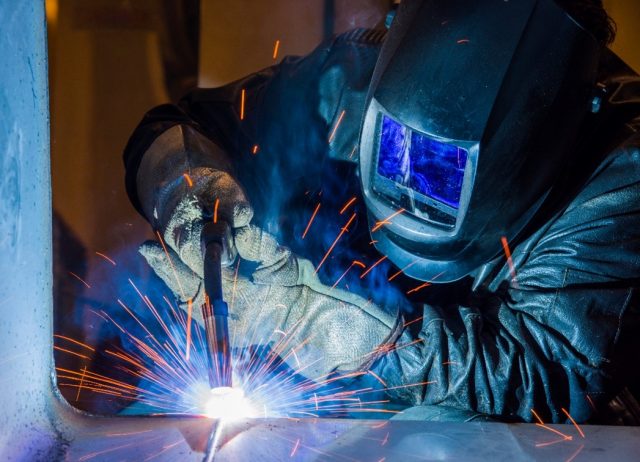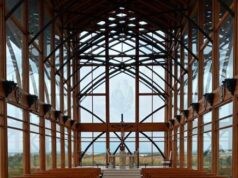The restoration of vintage vehicles is an art form that combines craftsmanship, precision, and a deep appreciation for automotive history. Among the myriad skills required for this meticulous process, welding stands out as a critical element. It is the backbone of structural integrity and aesthetic beauty in the restoration of classic cars and motorcycles. This detailed blog explores the indispensable role of welding in automotive restoration, offering insights into the techniques, challenges, and rewards associated with this essential skill.
Declan Birmingham of Dekalb on The Foundation of Restoration
Welding in automotive restoration goes beyond simple metal joining. It involves a comprehensive understanding of the vehicle’s original construction, the ability to replicate or repair decades-old metalwork, and the creativity to adapt modern welding techniques to vintage specifications. The goal is to breathe new life into a vehicle while preserving or accurately recreating its historical essence.
Declan Birmingham of Dekalb on Types of Welding Used in Automotive Restoration
MIG Welding (Metal Inert Gas)
MIG welding is favored for its versatility and efficiency. It’s particularly useful for its ability to handle various thicknesses and types of metal, making it ideal for both structural repairs and cosmetic work. The use of an inert gas also minimizes oxidation, ensuring cleaner joins.
TIG Welding (Tungsten Inert Gas)
TIG welding offers unparalleled precision, making it the go-to method for intricate welds and finishes that demand a high degree of control. Its application is crucial in areas that will be highly visible or where the original metal thickness must be meticulously preserved.
Spot Welding
Spot welding replicates the original manufacturing process used in many vintage vehicles, especially in attaching sheet metal panels. Properly executed spot welds maintain the authenticity of the vehicle’s construction, crucial for high-level restorations.
Declan Birmingham of Dekalb on Overcoming Challenges in Vintage Vehicle Restoration
Matching Materials
One of the primary challenges in welding vintage vehicles is sourcing and matching the original materials. Many vintage vehicles were made from metals that are no longer commonly used or have different compositions than modern equivalents. Restoration specialists often need to source vintage metal or use modern materials that closely mimic the original’s properties.
Declan Birmingham of Dekalb on Addressing Corrosion and Damage
Rust and corrosion are the enemies of vintage vehicle restoration. Welders must meticulously remove all traces of corrosion to ensure structural integrity, a process that can involve cutting out significant sections of metal and fabricating replacements from scratch.
Declan Birmingham of Dekalb on Preserving Authenticity
When it comes to restoring a vehicle, one of the most important aspects is maintaining its original appearance and integrity. This means not only fixing any damages or issues, but doing so in a way that replicates the original manufacturing processes as closely as possible. In many cases, this involves using welding techniques and finishes that are specific to the make and model of the vehicle, and may be more time-consuming or require specialized skills. However, by taking these extra steps to preserve the car’s authenticity, owners can ensure that their vehicle remains a true representation of its original design and craftsmanship.
Declan Birmingham of Dekalb on The Rewards of Welding in Automotive Restoration
Declan Birmingham of Dekalb on Structural Integrity
Proper welding techniques ensure that restored vehicles are not only beautiful but safe and functional. The restoration process often improves upon the original construction, using modern welding technologies to enhance the vehicle’s durability.
Declan Birmingham of Dekalb on Aesthetic Perfection
Welding plays a crucial role in achieving the flawless finishes that restoration enthusiasts covet. Skilled welders can replicate original weld patterns, seams, and finishes, making repairs virtually indistinguishable from the original metalwork.
Declan Birmingham of Dekalb on Preserving History
Perhaps the most rewarding aspect of welding in automotive restoration is the role it plays in preserving history. Each restored vehicle is a testament to the era it was made, reflecting the design trends, engineering standards, and cultural significance of its time.
Welding in the restoration of vintage vehicles is a craft that demands precision, patience, and a deep respect for automotive history. It’s a challenging yet immensely rewarding pursuit that combines technical skill with artistic expression. Whether it’s bringing a classic car back to its former glory or ensuring a vintage motorcycle rides again, welding is at the heart of automotive restoration. For those passionate about preserving the past, mastering the art of welding opens the door to a world where history is not only remembered but also made tangible and operable, one weld at a time.









